Are you tired of dealing with embroidery puckering when you’;sta lavorando ai progetti di ricamo a macchina?
Può essere frustrante vedere tutto il tuo duro lavoro essere viziato dai pucker nel tessuto. But don’;Non preoccuparti! I’;m qui per aiutarti a capire perché accadere e come prevenirlo.
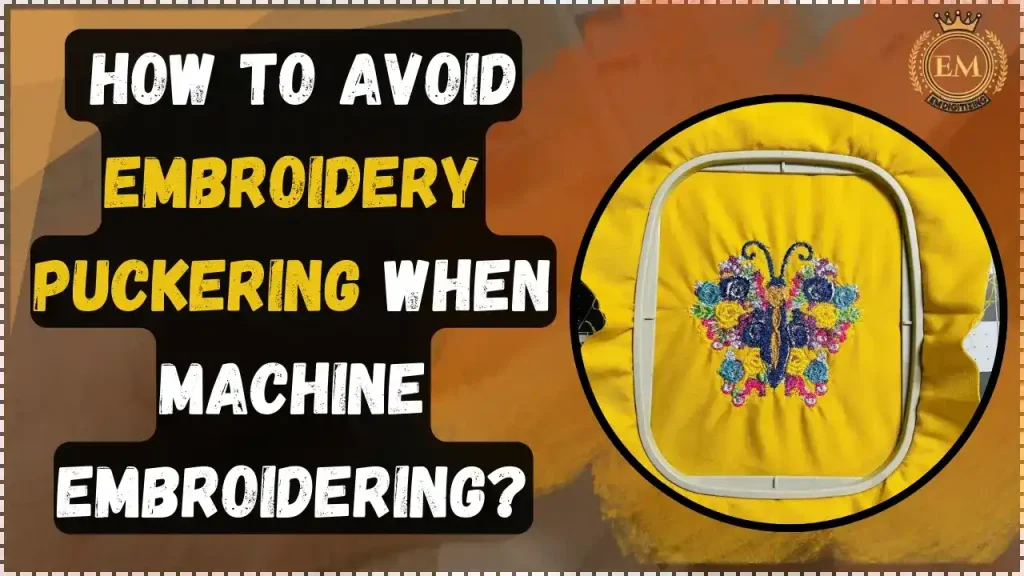
Entro la fine di questa guida, you’;Avrebbero le conoscenze e i consigli di cui hai bisogno per mantenere il tuo ricamo a lievi e professionali ogni volta.
Let’;S immergere e affrontare insieme questa comune sfida di ricamo!
Come evitare le arricciature nel ricamo durante il ricamo a macchina?
Comprensione del ricamo
Accumulo nel ricamo si verifica quando il tessuto attorno ai punti si raggruppa o si rughe, rendere il tuo design irregolare o irregolare. It’;S come quando tiri una tovaglia, e parti di esso si raccolgono; something similar happens with fabric when you’;stai ricamando.
Questo problema può rendere il tuo bellissimo ricamo meno ordinato e professionale.
Perché accadde il branding?
Puckering usually happens because the fabric moves around too much when you’;Riflettendolo.
If the fabric isn’;t held tightly enough or if it’;è un tipo che scorre facilmente, Può raggruppare sotto l'ago.
Imagine trying to write on a piece of paper that keeps slipping away—it’;è difficile mantenere pulito la tua scrittura, Giusto? It’;è lo stesso con il ricamo.
Tipi di tessuti che potrebbero arricciare
- Tessuti scivolosi: I materiali come il raso o il nylon sono lisci e possono scivolare facilmente, Il che li rende difficili da ricamare senza arricciare.
- Tessuti leggeri: Materiali sottili, come il lino o un po 'di cotone, può anche rughing facilmente perché non sono molto pesanti.
- Tessuti elastici: Tessuti che si allungano, Come quelli usati nelle magliette, può tirar fuori forma quando li ricamare, Soprattutto se tornano in forma dopo averli rilasciati dal telaio da ricamo.
Cause comuni di ricamo arricciando
Arruciare può rovinare l'aspetto regolare del tuo ricamo, rendendo importante capire cosa lo causa. Ecco uno sguardo dettagliato al motivo per cui questo accade e come puoi individuare i soliti sospetti che portano a arricciare.
- Caratteristiche del tessuto e del materiale
- Errori di disallineamento e selezione stabilizzatore
- Digitalizzazione delle sfide e problemi di tensione del thread
Caratteristiche del tessuto e del materiale
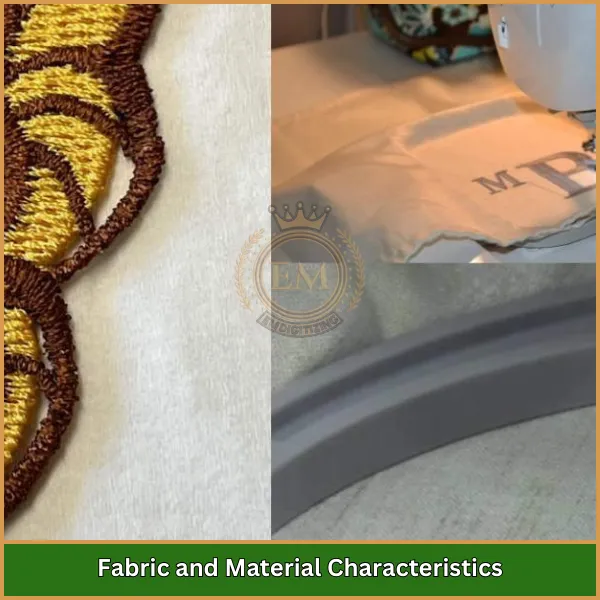
Il tipo di tessuto Usi gioca un ruolo importante nella probabilità. Some fabrics just don’;t handle embroidery well because they’;o è troppo elastico, Troppo sottile, o troppo scivoloso.
Per esempio, if you’;lavorare con un tessuto scivoloso come il raso, Può muoversi troppo sotto l'ago. Allo stesso modo, I tessuti leggeri come Chiffon potrebbero raccogliere perché non riescono a gestire bene la tensione.
Ogni tipo di tessuto ha le sue esigenze, Quindi scegliere quello giusto per il tuo progetto è fondamentale per mantenere la qualità dei ricami.
Errori di disallineamento e selezione stabilizzatore
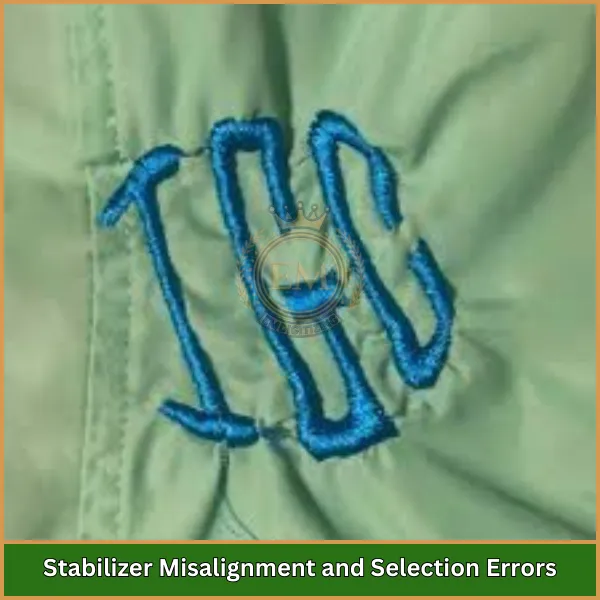
Uno stabilizzatore supporta il tessuto durante il ricamo, aiutando a mantenerlo piatto e in atto. Se lo stabilizzatore non viene scelto o allineato correttamente, Il tuo tessuto potrebbe muoversi o allungare mentre ricamare. Questo disallineamento può causare il raggruppamento del tessuto, portando a sconcertare.
È come mettere le basi sbagliate sotto una casa; Se non è giusto, Le cose possono andare traballante.
Scegliere lo stabilizzatore giusto per il tessuto e assicurarsi che sia applicato correttamente sono i passaggi chiave per prevenire il ricamo a macchina..
Digitalizzazione delle sfide e problemi di tensione del thread
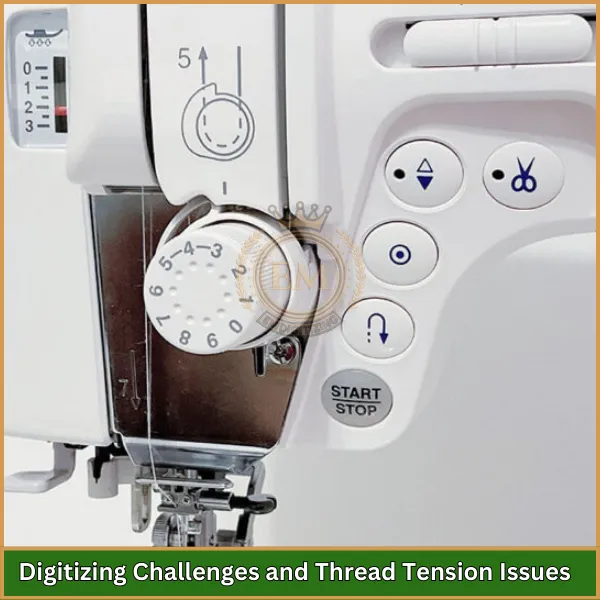
Come il tuo disegno del ricamo è creato nel software digitalizzante può anche portare a arricciare. Se il design è troppo denso o il percorso di cucitura non è ottimizzato per il tipo di tessuto, Il tessuto può essere tirato troppo stretto durante il ricamo a cerchio.
Questa tensione dal filo mentre tira attraverso il tessuto può causare arricchirsi. È essenziale avere il tuo design digitalizzato pensando al tessuto specifico, Considerando fattori come la lunghezza e la densità del punto.
Soluzioni complete per prevenire il ricamo.
Per ottenere design di ricami lisci e dall'aspetto professionale, È fondamentale implementare strategie efficaci che affrontano le cause comuni di increspatura.
Ecco una guida alle soluzioni complete che possono aiutarti a prevenire questo problema
- Selezione dello stabilizzatore appropriato
- Tecniche di preparazione del tessuto e del cerchio adeguate
- Suggerimenti per la digitalizzazione avanzati per ridurre la densità e la regolazione del sottosuolo
- Ottimizzazione delle impostazioni della macchina per Tensione del filo e velocità
Selezione dello stabilizzatore appropriato
Lo stabilizzatore giusto forma la spina dorsale di ricami di successo sostenendo il tessuto durante il processo di cucitura. Scegliere uno stabilizzatore che corrisponda al peso e al tratto del tessuto è essenziale.
Ad esempio, use a cut-away stabilizer for stretchy materials to prevent the fabric from moving and a tear-away for more stable fabrics that don’;allungare. Ciò garantisce che il tessuto rimanga liscio e supportato, minimizzare la possibilità di incresparsi.
Tecniche di preparazione del tessuto e del cerchio adeguate
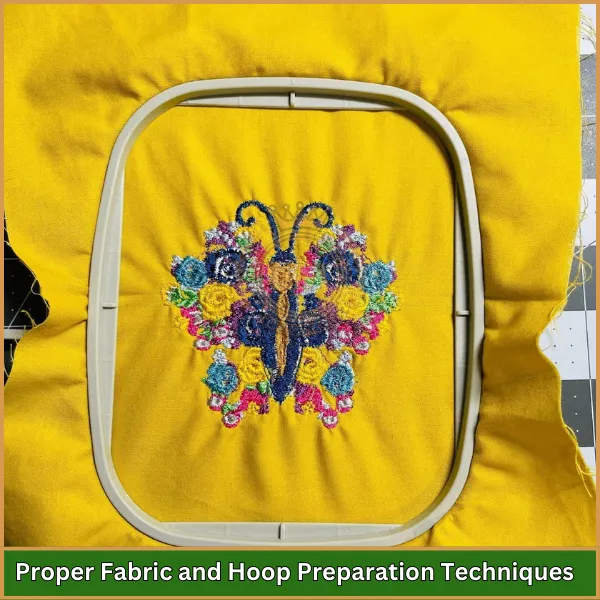
Preparare correttamente il tessuto prima di iniziare può ridurre notevolmente il rischio di incresparsi. Prima, Assicurarsi che il tessuto sia appropriato e privo di rughe. Quando si colpisce, Il tessuto dovrebbe essere teso ma non troppo stretto.
It’;s come la pelle di batteria; Dovrebbe essere abbastanza stretto da rimbalzare quando è leggermente toccato. Questo equilibrio aiuta a mantenere una tensione uniforme durante il processo di ricamo, impedire al tessuto di radunarsi attorno ai punti.
Suggerimenti per la digitalizzazione avanzati per ridurre la densità e la regolazione del sottosuolo
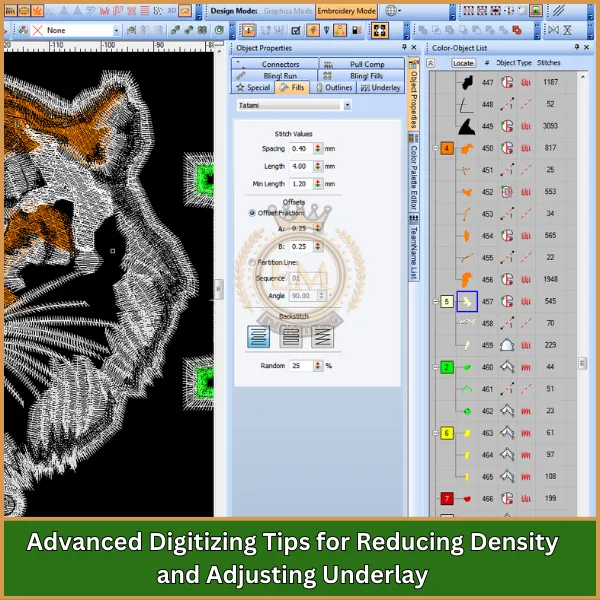
Il modo in cui un file di ricamo viene digitalizzato può avere un impatto significativo sul risultato finale. Per evitare arricciature, Riduci la densità dei punti nel tuo design, Soprattutto quando si lavora con tessuti leggeri o delicati. Inoltre, La regolazione del sottosuolo può aiutare a stabilizzare il materiale.
Un sottosuolo funge da base, Tenere premuto il tessuto e levigarlo prima che vengano applicati i punti superiori. Le impostazioni sottostanti adeguate possono impedire che il tessuto venga tirato troppo strettamente dai punti.
Ottimizzazione delle impostazioni della macchina per tensione e velocità
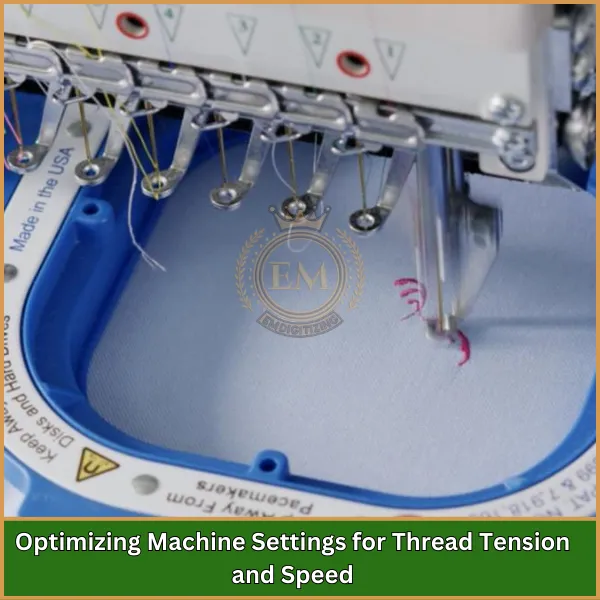
Regolare le impostazioni della macchina da ricamo è fondamentale per prevenire il rallegria. La tensione del filo dovrebbe essere impostata in modo che non sia né troppo stretto né troppo sciolto; Entrambi gli estremi possono causare il rimpasto del tessuto. Anche, Prendi in considerazione la riduzione della velocità della macchina da ricamo.
Una velocità più lenta consente un posizionamento del punto più preciso e riduce lo stress sul tessuto, che può aiutare a mantenere la qualità del ricamo e prevenire il branding.
Conclusione: Garantire risultati di ricamo fluidi e professionali
We’;ha parlato di come smettere di arricciarsi e assicurarsi progetti di ricamo sembrare pulito e liscio. Ricorda, Per ottenere i migliori risultati, devi usare il supporto giusto, Assicurati che il tuo tessuto sia messo nel cerchio giusto, e imposta correttamente la macchina da ricamo.
If you’;REI alla ricerca di un aiuto esperto per ottenere il meglio dai tuoi design di ricami, Nostro servizi di digitalizzazione A EMDigitalizzazione sono qui per aiutarti. Offriamo tempi di consegna rapidi, prezzi convenienti, e risultati di alta qualità che eleneranno i tuoi progetti di ricamo.
Più, if it’;è la prima volta che utilizza i nostri servizi, ottieni 50% spento! Questa è un'ottima opportunità per vedere come l'aiuto professionale può rendere i tuoi disegni perfetti ogni volta.
Così, Non preoccuparti più di incresparsi, lascia che ti aiutino a rendere ogni progetto un successo!
Domande frequenti
Embroidery can pucker after being washed if there’;S è stata utilizzata troppa tensione durante la cucitura o non abbastanza stabilizzatore. Quando lo lavi, the fabric might change shape because it wasn’;t adeguatamente supportato durante il processo di ricamo.
Per levigare il ricamo increspato, Inizia gettando l'oggetto ricamato a faccia in giù su una superficie piana. Nebbia leggermente con acqua. Quindi, allungare delicatamente il tessuto fino a quando non è piatto. Questo metodo aiuta a rilassare le fibre e a ridurre il raggruppamento.
Accumdare nel ricamo può accadere per diversi motivi, incluso il non tenore correttamente il tessuto, Non usare abbastanza stabilizzatore, scarso digitalizzazione, o avere la tensione del filo troppo stretta. Spesso, anche il branding è causato da disegni che sono troppo densi o hanno troppi punti confezionati in una piccola area, Il che mette molto stress sul tessuto.
